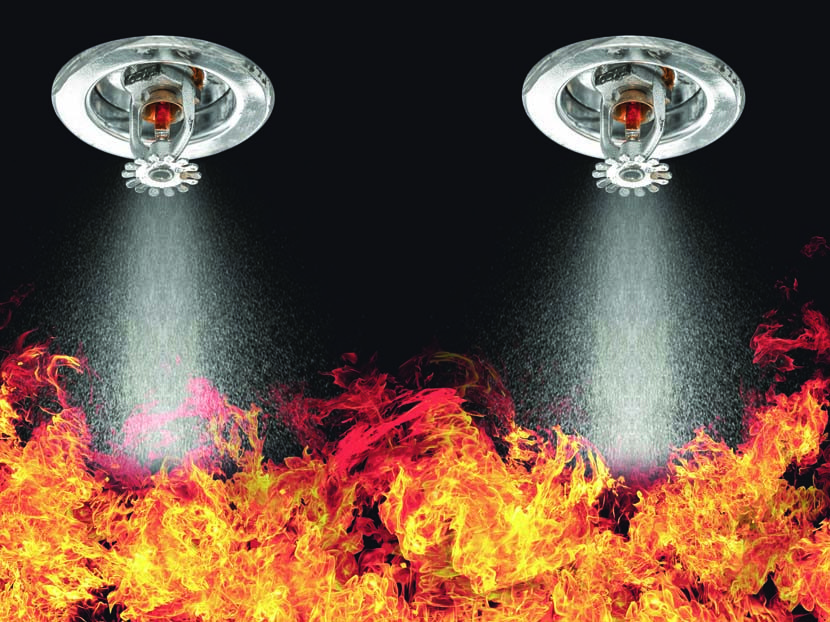2019 NFPA 13D and 13R
Code changes for residential sprinkler systems.

The National Fire Protection Association Standards Council issued the 2019 edition of NFPA 13D, Standard for the Installation of Sprinkler Systems in One- and Two-Family Dwellings and Manufactured Homes. It is effective as of Sept. 3, 2018.
Because there were no Notices of Intent to Make a Motion (NITMAM) filed for NFPA 13R. Standard for the Installation of Sprinkler Systems in Low-Rise Residential Occupancies, the Standards Council was able to issue this standard with an effective date of May 24, 2018.
In this column, we will look at changes to the new editions that I thought would be of most interest to you all. It is not a complete listing of changes. For that, you can read the first and second draft revisions for the standards on the NFPA website.
Revisions to NFPA 13D
• 3.3.1. Adds a definition for bathroom to match the definition contained in NFPA 13R. A new annex note, A.3.3.1, clarifies that a bathroom does not necessarily need to contain a bath; it may contain only a toilet. I suppose there is an Authority Having Jurisdiction out there that needs this clarification.
• 3.3.12.8. Modifies the definition of a sprinkler system to be similar to the definition in NFPA, except it does not include a water flow alarm since that is not required by 13D.
• 4.1.3. A new paragraph recognizing the use of high-temperature-rated sprinklers.
• Paragraph 4.4 from the 2016 edition is deleted. This was the requirement for smoke alarms. The Technical Committee (TC) decided that smoke alarms should not be required by a sprinkler installation guide; that is the purview of NFPA 72.
• 5.1.2.1. Expands the menu of items not required to be listed (e.g., UL or FM). The original proposal intended to eliminate hangers from the list. The TC decided to continue to permit hangers not to be listed and further expanded the items that did not require listing.
• 5.3. Clarifies that any type of piping, aboveground or underground, that meets the applicable plumbing code can be used between the point of connection to a sprinkler system and the water supply source, and between a remote system riser and the dwelling.
• 6.1.3. Clarifies the small dwelling allowance to permitting the duration of the stored water supply to be seven minutes (rather than 10 minutes) to ensure the amount of stored water is based on the highest calculated sprinkler demand. The 2016 edition required the size be based on the largest two-sprinkler demand, ignoring the possibility that a single sprinkler demand may be larger, e.g., where certain extended coverage sprinklers are used.
• 6.1.5. Permits the water supply duration requirement to be met by a combination of stored water supply and automatic refill rate. Note that 6.1.4 already permits this but just for well-water supplies.
• The requirement for a pressure gauge on pressure-regulating or pressure-reducing valves is moved from paragraph 7.2.6 to paragraph 7.3.3.
• 7.4.5. Requires that hangers supporting exposed sprinkler piping be metal or made of the same material as the structure. The original change was to require “metal or hangers listed for this application” but was changed by the TC in a second revision.
• 7.5.6.3(5). Requires sprinklers in closets which contain ventless clothes dryers to be of the intermediate temperature classification or higher.
• 8.1.3.1.3. A new provision permitting the use of a sprinkler barrier instead of minimum distances to avoid spraying of adjacent sprinklers.
• 8.2.1.2. Describes conditions where sprinklers can be located directly below or adjacent to beams that have a maximum depth of 14 in. Adds new Figures 8.2.1.1(a) and (b).
• 8.2.1.3. Limits concealed sprinklers installed within beams to beams with a maximum depth of 4 in.
• 8.2.5.6. A new provision identifying acceptable shadow areas to sprinkler coverage for sidewall sprinklers in corridors. Addresses maximum 2 ft. deep by 9 ft. wide alcoves, which frequently occur in residential corridors.
• 8.3.5. This new provision exempts attached enclosed swimming pools and tennis courts from sprinklers, provided these areas have a direct exit to the exterior. A NITMAM to strike this provision was passed by the membership at the Technical Session last June, so this provision will be stricken from the 2019 edition.
• 8.3.6. Modified to clarify that unheated enclosures at entrance/exits do not require sprinklers, as long as there is another exit available. A.8.3.6 has been added to indicate a mudroom would be a good example of such an area.
• In Chapter 9, Protection from Freezing, the term “in Areas Above 40 F (4 C)” was deleted from title paragraph 9.1.1. Also, the term “Below 40 F (4 C)” which appears in title paragraph 9.1.2 was replaced by “Subject to Freezing.” These changes clarify that there may be conditions where dips below 40 F for short periods may not necessarily warrant freeze protection.
• 9.2.2.3 is deleted. This section limited the concentration of antifreeze solutions to the minimum needed for the anticipated minimum temperature. However, premix solutions are not available in a wide selection of concentrations.
• 10.4.6.1 and 10.4.7.1. These sections permit the water supply for hydraulic calculation of 13D sprinkler systems to be based only on static pressure where the street main size is 4 in. or larger.
• 12.3.6. A new section outlines conditions where systems in detached dwellings and manufactured homes are permitted to be put in an inactive state.
• Figure A.6.2 9(e). Adds new figure depicting an acceptable arrangement for water supplies to townhouses.
• A.7.5.6.3(3). Provides revised and new figures to clarify the position of ordinary and intermediate temperature sprinklers near fireplaces.
Revisions to NFPA 13R
• 1.1. The scope statement was slightly modified and additional annex material was included in A.1.1 to make it clear that the four-story limit can be used for residential occupancies on top of pedestal and podium-style buildings.
• 3.3.2. Adds a definition for carports to be consistent with the definition in the International Building Code.
• 3.3.14. Modifies the definition of system working pressure and now includes pressures from the fire department connection.
• 5.2.2.3. Outlines conditions where pipe listed for light-hazard occupancies can be installed in or above ordinary hazard rooms.
• 6.2.2.2(8). Permits porches, balconies, lanais and similar areas to be protected with residential sprinklers.
• 6.2.2.3. Allows the use of standard response sprinklers in garages.
• 6.2.3.3.4. Requires sprinklers in closets which contain ventless clothes dryers to be of the intermediate temperature classification or higher.
• 6.4.6.1.1.1. Describes conditions where sprinklers can be located directly below or adjacent to beams that have a maximum depth of 14 in. Adds new Figures 6.4.6.1.1.1(a) and (b).
• 6.4.6.1.2. Limits concealed sprinklers installed within beams to beams with a maximum depth of 4 in.
• 6.4.6.3.4.5 and Figure 6.4.6.3.4.5. In hallways up to 6 ft. wide, sprinklers can be located adjacent to surface-mounted obstructions as long as they are in the “allowable obstruction zone.” The allowable obstruction zone is established so the sprinkler is only obstructed across the width of the corridor, not the length.
• A.6.2.3.3.3. Provides revised and new figures to clarify the position of ordinary and intermediate temperature sprinklers near fireplaces.
• 7.4. A new section on requirements for attics.
• Chapter 9, Water Supply, is completely rewritten and expanded.
• 9.3.4.1. Requires one to address water supply fluctuations in the system design.
• 9.3.4.2. Requires one to address safety factors in the system design.
• 9.7.2. Added to clarify that fire pumps shall meet NFPA 20.
In addition to the technical changes, metric conversions were standardized throughout both documents. Please be aware that none of this information is official until the final documents, NFPA 13R and 13D, are published by NFPA, so proceed with caution.
SFPE Notes: SFPE will host the 2018 SFPE Annual Conference and Expo, Oct. 28-Nov. 2 in Nashville, Tenn. This annual event is frequently cited as the top source of the latest technical information on fire protection engineering issues and emerging trends, case studies, research and codes and standards. Go to www.sfpe.org for more information.





